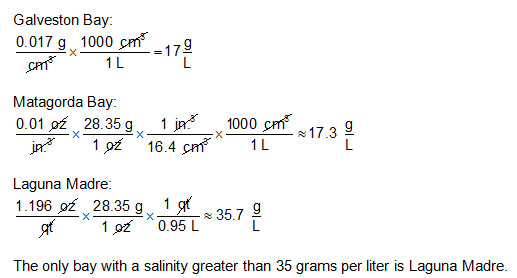
At certain points, there will be a need to convert between measurement systems when there are multiple units and types of measurements being used to describe an object or process. Usually, these types of problems involve rates.

For example, in describing the density of steel using customary units, you would say that the density of steel is 490 pounds per cubic foot (490 lb over ft lb ft3 ). However, most manufacturers of steel, as well as the machinery used in the process, rate the density of steel using the metric system. This is because steel is manufactured and shipped all over the world.
Knowing that the density of steel in customary units is 490 lb over ft lb ft3 , what is the density of steel in grams per cubic centimeter (g over cm g cm3 ) ?
Interactive popup. Assistance may be required.
You will be converting from customary units to metric/SI units.
Interactive popup. Assistance may be required.
You will be converting pounds to grams and cubic feet to cubic centimeters.
In this situation, you are combining mass/weight and volume measurements, which means that you will need the following two important conversion factors:
1 pound (lb) = 454 grams (g)
1 cubic inch (in.3) = 16.4 cubic centimeters (cm3)
Just as you have done before, you will need to write out a plan to follow for the unit conversion. There are two distinct conversions that you will perform; however, let's work on them simultaneously. Be sure to note where your units are in the fraction (numerator or denominator) and cancel them out so that you are left with grams per cubic centimeter.
Interactive popup. Assistance may be required.
Convert the pounds to grams directly. Convert the cubic feet to cubic inches, and then the cubic inches to cubic centimeters.

![]() Click on the image below to access the applet. Use the applet to perform dimensional analysis in order to perform the conversion.
Click on the image below to access the applet. Use the applet to perform dimensional analysis in order to perform the conversion.

![]() Use the video below to check your answer.
Use the video below to check your answer.
How does unit conversion for rates compare with unit conversion for quantities?

Source: Concrete Basement, H.Raab, Wikimedia
Interactive popup. Assistance may be required.
Convert the grams to pounds and the cubic centimeters to cubic feet. Use the conversion factors or the applet from the previous part of the lesson.

If 1 ounce = 28.35 grams, 1 quart = 0.95 liters, 1 in.3 = 16.4 cm3, and 1 liter = 1000 cm3, which bay has a salinity that is greater than seawater?
Interactive popup. Assistance may be required.
Use unit conversions to convert each bay’s salinity to grams per liter.
Interactive popup. Assistance may be required.

